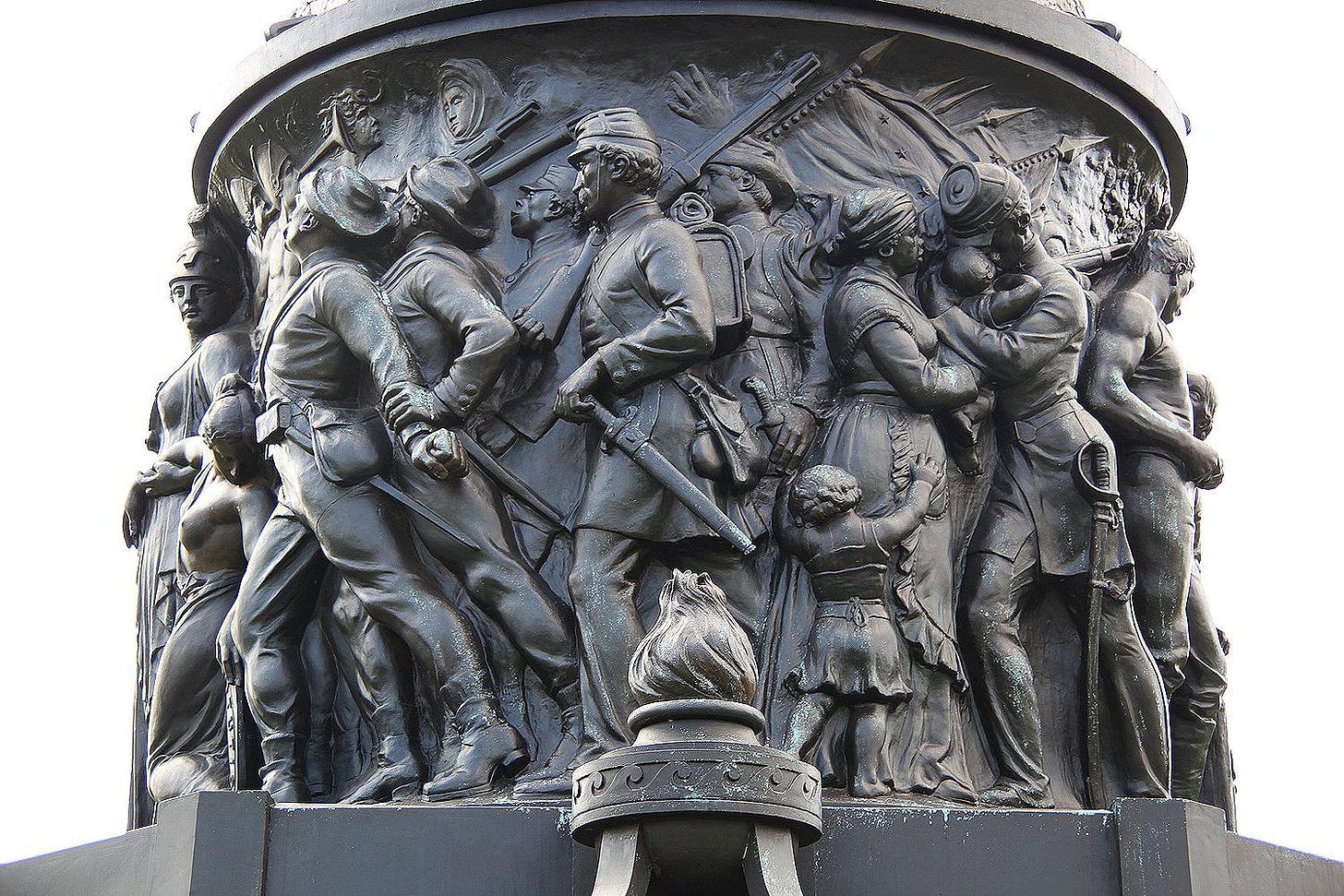I am pleased to see that military officials are giving the question of what should be done with the Confederate monument at Arlington National Cemetery serious consideration.
This past summer the Naming Commission recommended that the monument be removed from Arlington, where it has stood since its dedication in 1914. The monument, designed by artist and former Confederate Moses Ezekiel, sits at the center of hundreds of Confederate graves, including Ezekiel himself.
A reminder that you have only TWO MORE DAYS to take advantage of this special holiday offer. Become a paid member today and gain access to all of this site’s content.
I have been leading groups to this site for a number of years. Most people are stunned at both its size and its Lost Cause imagery.
It was inevitable that this monument would be added to the list of Confederate monument removals given the climate of the past few years. I understand why it is being removed, but its panels and sculptures need not be destroyed.
I’ve grown tired of people suggesting that every Confederate monument needs to be destroyed. I suspect that most of these people never gave these monuments a single thought before 2015.
There is much that the public can learn from these monuments.
I agree with historian Gaines Foster, who suggests that what is most important is moving the monument from the landscape of Arlington. Its power is literally rooted in the landscape, where it towers over everything in its immediate surroundings. I also agree that it shouldn’t be returned to the United Daughters of the Confederacy, in whose hands it would continue to serve as an object of reverence.
Some people have suggested that the monument reflects the strong pull of reconciliation in 1914. While it is true that dedication speeches reflected this theme, the monument itself is a non-apologetic celebration of the Confederate cause. It includes all of the state shields of Maryland, Kentucky, and Missouri, none of which seceded from the United States in 1861.
It is also true that former Confederates and white Southerners generally believed that they could both celebrate the Confederacy and claim allegiance to the United States. But the values and beliefs concerning issues of Civil War memory for Americans 100 years ago need not be ours. We are not bound by the past and our commemorative landscapes need not be dictated forever by people who came before us.
There is noting unusual about the removal of monuments.
What I would love to see is for part of the monument to remain in the hands of military officials at Arlington and interpreted in a museum setting. It could be used to tell the story of how both the Lee plantation and the story of African Americans, during the Civil War era and especially Reconstruction was erased from public memory.
In other words, we can remove the monument from the cemetery landscape, but use it to help visitors understand how it evolved over time in a more appropriate museum setting.
That story of African Americans is only now beginning to be told at the Lee-Custis mansion through new exhibits and the home as well.
We need much more of this. A careful interpretation of this monument can show how the Lost Cause narrative and its emphasis on “loyal slaves” came to dominate the nation’s collective memory by the early twentieth century and how it helped to erase the story of the thousands of former slaves who started new lives in an around Washington, D.C., including Arlington after the war, before they were forced to leave.
What do you think?






It strikes me that your more important point in this post is that because people of the past memorialized an event in a particular way does not mean we have to follow their lead. I think you are right. We need to move the Confederate memorial from Arlington. It represents a view of the past the country no longer owns and I’m not sure it ever did, at least not universally.
If we accept that premise then I think the next question, which you are also raising, is how do we appropriately remember the Confederate States of America?  I personally think it is as an alternative vision of what the country have been; a vision that the nation soundly rejected in 1865
In so far as this and the other monuments have to do with reconciliation, it is only between two parties to the conflict, Northern and Southern Whites. But there was a third interested party, Blacks, enslaved and free. The monuments reflect a rejection by Southern whites of reconciliation with Blacks.